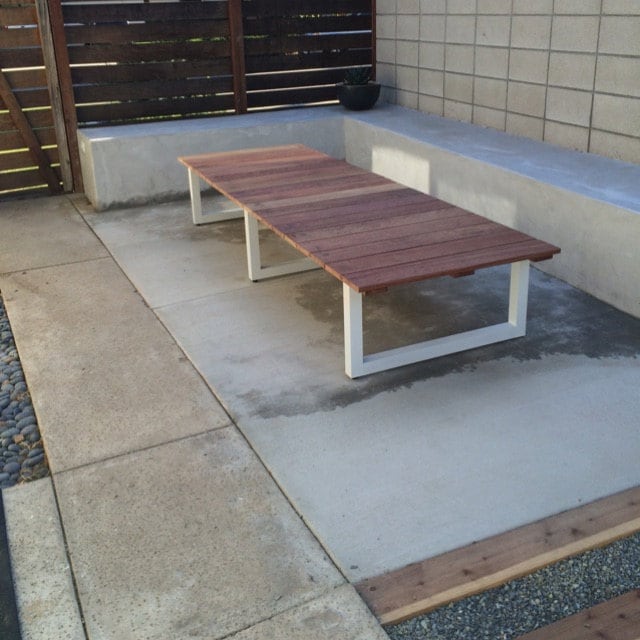The width of the table legs that you use to build your table has a big impact not just on the stability of the table, but also on the aesthetics. These pro tips will help you find that just right balance of form and function.
Stability
The right leg width is essential for stability; bottom line is that wider is more stable. However, having the leg too close to the edge is also something to consider, for moving the mounting holes back from the edge is a wise decision to make sure the wood remains solid, and the table often looks better with the end of the leg mounting plate hidden.
Here are some things to consider, which will give you some numbers to work with.
Maximum Leg Width:
I like a maximum leg width that is 3 inches less than the top slab's width. This moves the plate back from the edge, and is very similar to a standard counter top overhang. This is great for kitchen islands or smaller tables, such as breakfast tables.
Here is a formula for calculating the max leg width:
- (Width of my slab) - 3 inches = maximum table leg width to order
For example, on a 24-inch wide slab, the calculations would be (24 inches width of my slab) - 3 inches = 21 inches maximum table leg width to order.
Minimum Leg Width:
For stability concerns, the narrowest leg should cover 75% of the slab's width. This ensures that the table does not turn into a teeter tooter when users are getting up, pushing on the table edge, or resting their arms on the table edge.
Here is a formula for calculating the minimum leg width:
- (Width of my slab) x 0.75 = minimum table leg width to order
For example, on a 24-inch wide slab, the calculations would be (24 inches width of my slab x 0.75 = 18 inches minimum table leg width to order).
So for our example 24-inch wide slab, the table legs would need to be from 18 inches wide up to 21 inches wide. Any width in that range will be a stable option, but of course wider is always more stable. Now, let's look at other considerations.
Aesthetics: Narrow Table Legs vs. Wide Table Legs
Narrow table legs give a tabletop slab more "lift," making the top appear to float, which puts emphasis on the top. This is great for coffee tables and thick slabs that are smaller in dimensions, as this lift creates lots of interesting tension with the ground plane. This can also bring attention to ornate tops. Here are some fine examples of my customers' tables that were built using narrower table legs.
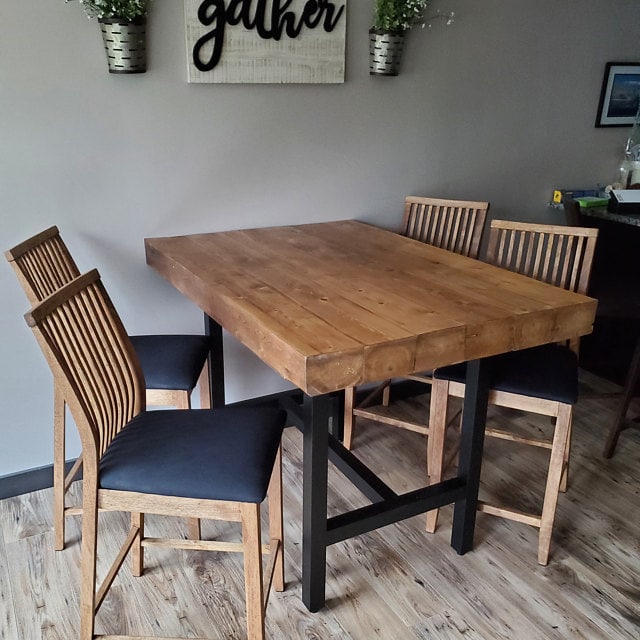
Narrower table legs provide visual lift.
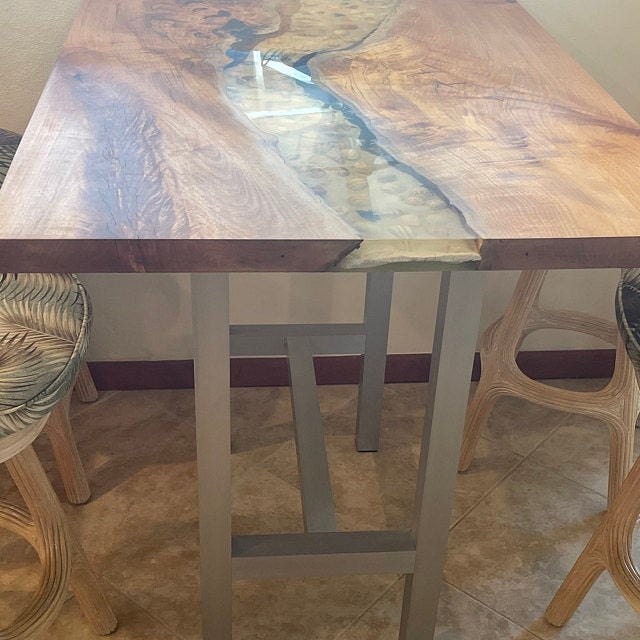
Narrower table legs provide visual lift.

Narrower table legs provide visual lift.
In contrast, wider table legs give the tabletop slab a more structured, grounded look, which emphasizes the architecture of the table as a whole. The top and the table legs become more of a unified object. This is great for taller tables, larger slabs, and tops that are a thinner material. Because the table top apears more supported, thinner tops appear more ridgid and stronger, rather than lightweight as would be the case if a more narrow leg were used. Here are some fine examples of my customers' tables that were built using wider table legs.

Wider table legs offer a grounded feel.
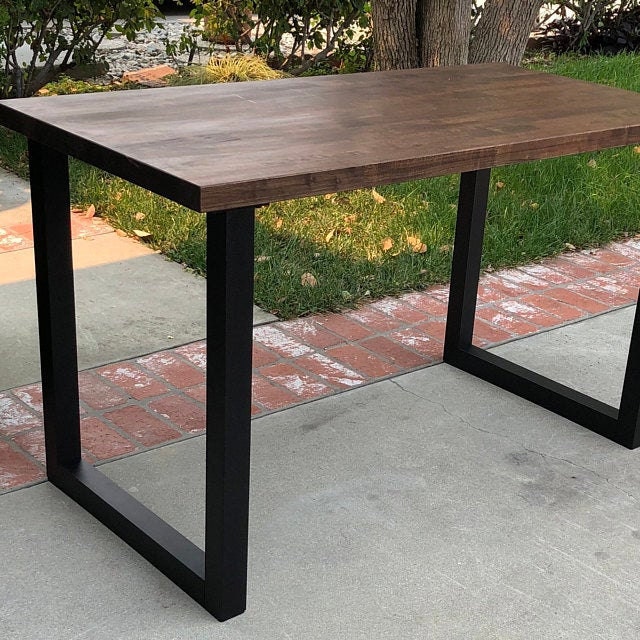
Wider table legs offer a grounded feel.
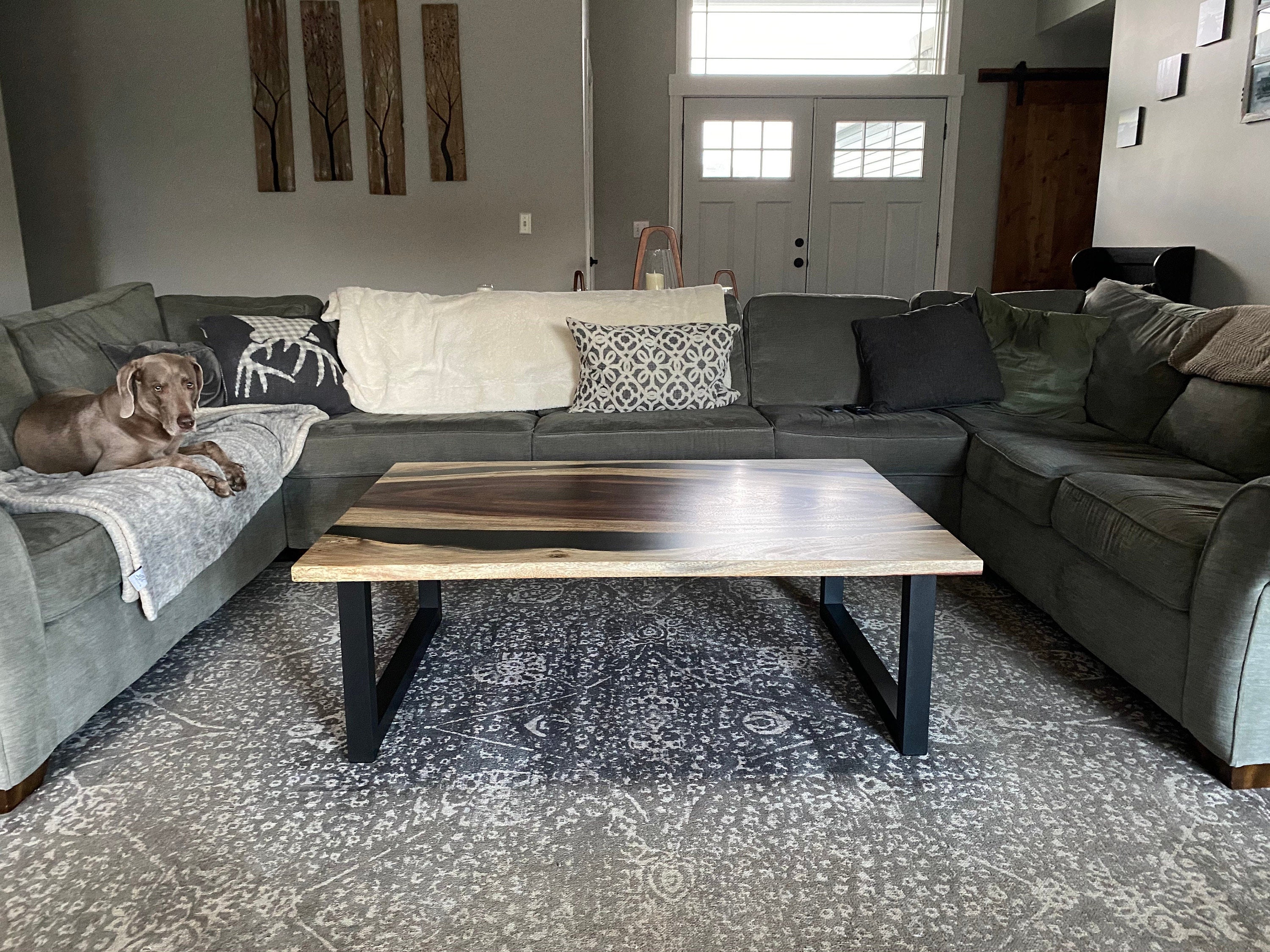
Wider table legs offer a grounded feel.
A Frame or Trapezoid Shaped Legs
A Frame and trapezoid-shaped table legs get narrower towards the top, yet their footprint can be as wide as the maximum table leg width allows. Technically, the footprint can be made the exact width as the tabletop slab, while the mounting plates can simply be custom made shorter so as to remain hidden. As such, they offer the same "lift" as a narrow leg, but are able to provide the same stability as a wider leg. They are also very interesting to look at, so they are great for that more complex, architectural look. Here are some fine examples of my customers' tables that were built using more complex table legs.
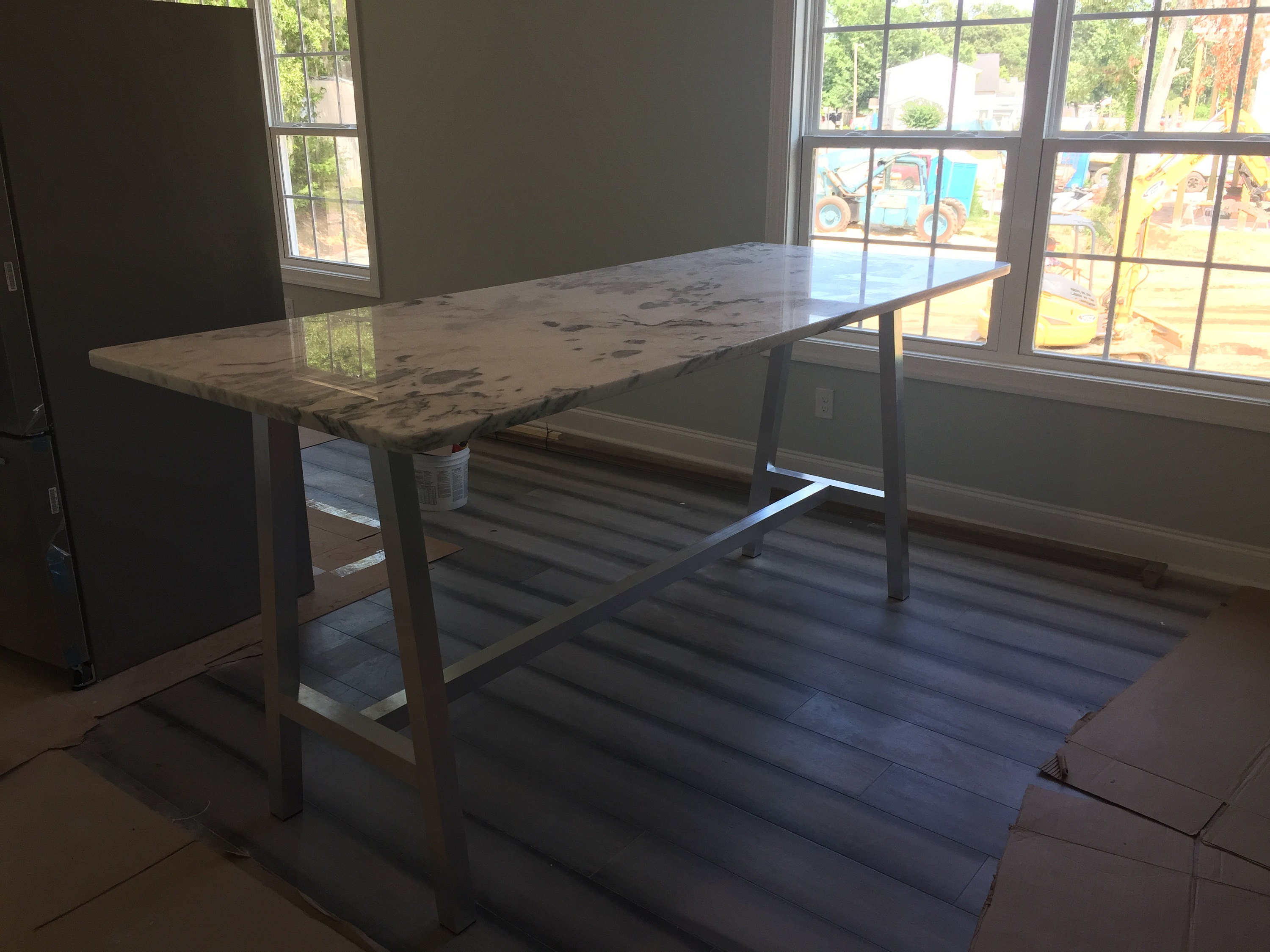
A Frame table legs provide structure and lift
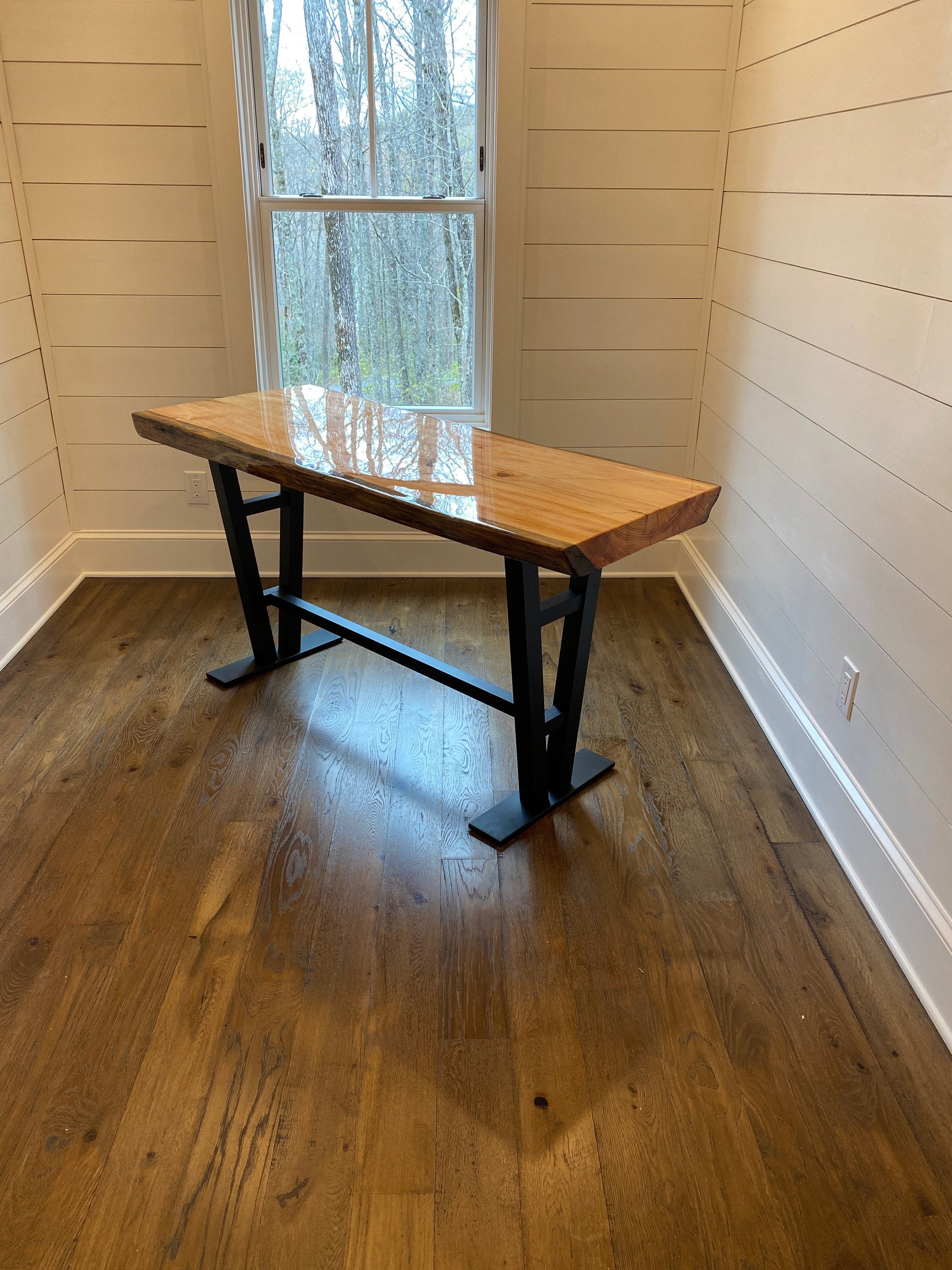
V Pedestal table legs provide structure and lift
Benches
Benches are usually narrow slabs, so going as wide as possible for the leg width is important for stability. I often break my 3 inches less than rule and go with 2 inches less than the slab's width. For example, on a bench that is 14" wide, I would get 12" wide legs. Benches also often need a middle leg, depending on the length. Contact me for more specific information on your project or to request a different hole location so as to move the holes back from the edge.

